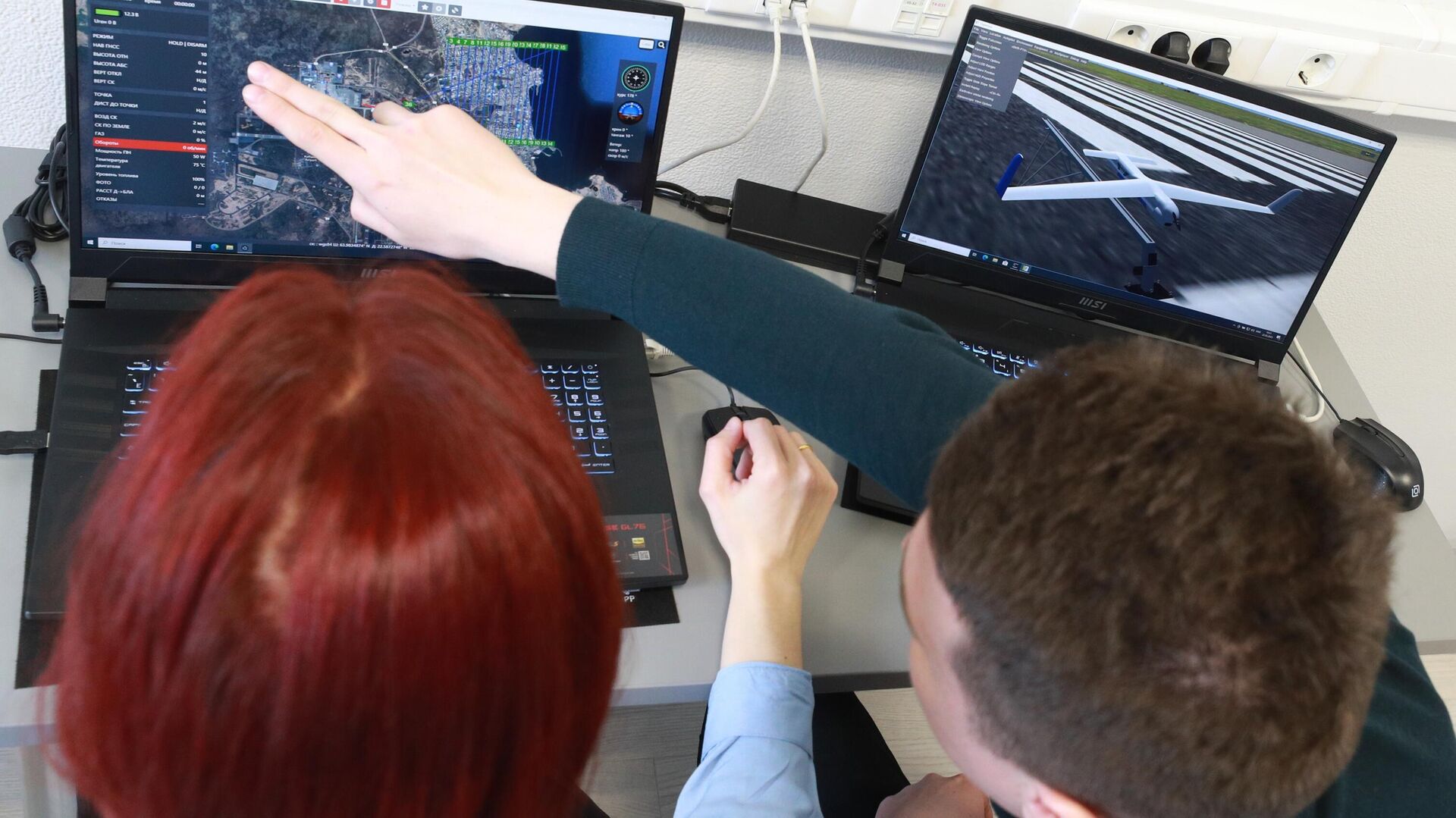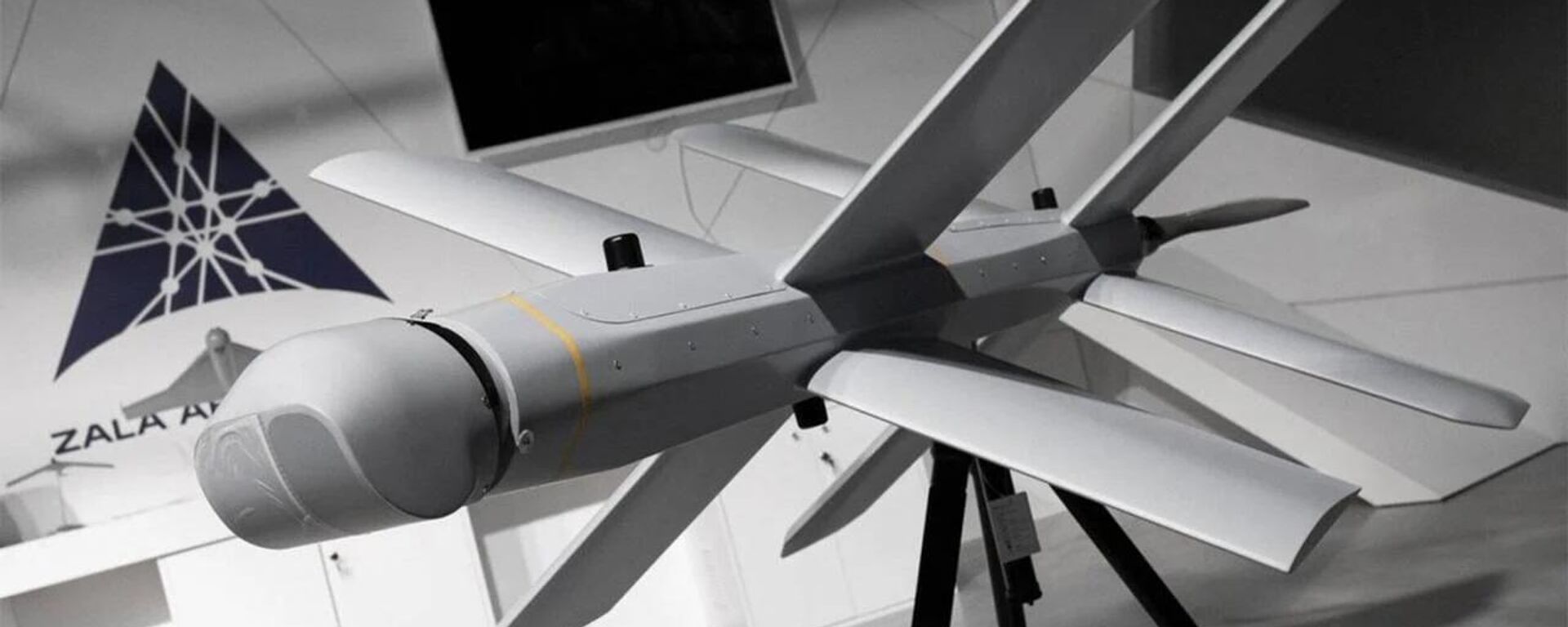https://en.sputniknews.africa/20230607/1059763032.html
Russian MoD Greenlights Kamikaze Drone Privet-82
Russian MoD Greenlights Kamikaze Drone Privet-82
Sputnik Africa
MOSCOW (Sputnik) - Russia's state-of-the-art kamikaze drone Privet-82, developed by the Oko design bureau, has been approved by the Russian Defense Ministry... 07.06.2023, Sputnik Africa
2023-06-07T09:03+0200
2023-06-07T09:03+0200
2023-06-07T09:04+0200
russia
military
drones
https://cdn1.img.sputniknews.africa/img/07e7/06/07/1059763214_0:177:3014:1872_1920x0_80_0_0_cf86f214f55fb74e43278e2ce8fed8f2.jpg
"We received a protocol that we have been approved by the Ministry of Defense. This was on May 19," Zhernov said. According to the protocol, the drone was tested for the declared range and flight time with a standard load at a distance of 10 kilometers (6.2 miles). During the tests, the drone started up normally, was controlled steadily throughout the flight, maneuvered, disabled and re-activated engines when practicing attack dive, and worked off a repeat attack in silent mode. Capability to transfer control of the drone in flight from one operator to another was demonstrated, Zhernov said. The drone also proved its ability to maintain control and data transmission channels under conditions when the enemy used an electronic warfare system against it. In this case, the signals of the Global Navigation Satellite System (GNSS) were suppressed at a range of 2.5 kilometers and then the drone was able to continue without GNSS. The Privet-82 loitering munition can carry a warhead weighing more than 5 kilograms (11 pounds) at a range of about 30 kilometers and costs a little over 100,000 rubles ($1,300). In May, Sputnik reported that Russia's new Privet-82 kamikaze drones would be able to fly to the front line from unified rear hubs, and that operators would connect to their control already on the front lines and then point them at enemy targets. From a hub, one to several kamikaze drones can be sent to a particular unit at once, both one after another and all at once.
https://en.sputniknews.africa/20230515/1059272872.html
russia
Sputnik Africa
feedback@sputniknews.com
+74956456601
MIA „Rossiya Segodnya“
2023
Sputnik Africa
feedback@sputniknews.com
+74956456601
MIA „Rossiya Segodnya“
News
en_EN
Sputnik Africa
feedback@sputniknews.com
+74956456601
MIA „Rossiya Segodnya“
Sputnik Africa
feedback@sputniknews.com
+74956456601
MIA „Rossiya Segodnya“
russia, military, drones
Russian MoD Greenlights Kamikaze Drone Privet-82
09:03 07.06.2023 (Updated: 09:04 07.06.2023) MOSCOW (Sputnik) - Russia's state-of-the-art kamikaze drone Privet-82, developed by the Oko design bureau, has been approved by the Russian Defense Ministry, Oko co-owner and general director Vadim Zhernov told Sputnik on Tuesday.
"We received a protocol that we have been approved by the Ministry of Defense. This was on May 19," Zhernov said.
According to the protocol, the
drone was tested for the declared range and flight time with a standard load at a distance of 10 kilometers (6.2 miles). During the tests, the drone started up normally, was controlled steadily throughout the flight, maneuvered, disabled and re-activated engines when practicing attack dive, and worked off a repeat attack in silent mode. Capability to transfer control of the drone in flight from one operator to another was demonstrated, Zhernov said.
The drone also
proved its ability to maintain control and data transmission channels under conditions when the enemy used an electronic warfare system against it. In this case, the signals of the Global Navigation Satellite System (GNSS) were suppressed at a range of 2.5 kilometers and then the drone was able to continue without GNSS.
The Privet-82 loitering munition can carry a warhead weighing more than 5 kilograms (11 pounds) at a range of about 30 kilometers and costs a little over 100,000 rubles ($1,300).
In May, Sputnik reported that Russia's new Privet-82 kamikaze drones would be able to fly to the front line from unified rear hubs, and that operators would connect to their control already on the front lines and then point them at enemy targets.
From a hub, one to several kamikaze drones can be sent to a particular unit at once, both one after another and all at once.


